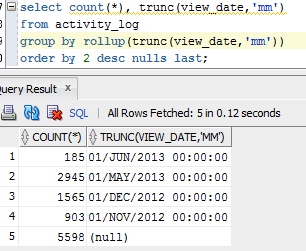From my employer's perspective we had a very successful year at the Perth Insync13 conference.
Sage had 7 papers from 4 of our team, and as usual our exhibition booth was very popular.
We were pushing the mobile theme this year to help stand out to enter our giveaway you needed to use an APEX application, instead of the usual business card in a bowl. It seemed we were going against the grain of some old habits, but this is 21st century IT so we encouraged all visitors to give it a go.
![]() |
| SAGE exhibition booth |
Day 1
I was a busy boy with a half-day workshop and two presentations so I didn't get to see many other papers, but I had already seen quite a few at the Melbourne and Brisbane legs.
So I ended up being rather selective, and I was pretty happy with the ones I attended. First off the rank was an international guest
Bjoern Rost Tackling Time Troubles. He was entertaining, engaging and a nice fellow - so we felt me must teach him some Australian vernacular.
I had already seen Penny's 12c optimizer [
pdf] presentation but listened to the first few lego star wars jokes and she was well received - so I snuck in to see most of
Chris Muir talk about
UX design patterns.
I then had to prepare for my half-day workshop on consuming APEX plug-ins. My laptop started to get clammy and freeze which gave me a little scare, but I ended up kicking off in time. Attendees would claim a workspace from my laptop, but in hindsight I now know a much better way to arrange this - next time...
Interaction was good, and my main mission was accomplished - more awareness of the capability and availability of APEX plug-ins. I'll write a separate post on this with all the relevant links.
I finished the day with
Phil Robinson talking about testing - I would have liked to see more developers at this very informative session.
Unfortunately I had to leave early on the best session of all - networking drinks, so I didn't attend any dinners. I did bump into
Tariq Farooq, great to put a face to an online entity!
Day 2
Andrew Rosson from Lansen started the day with a comparison of
GlassFish & WebLogic, which also included some
very interesting news about GlassFish.
I took a break before the feature from
Connor McDonald on
CloneDB. It delivered much more than I was expecting, including 7 very impressive demonstrations.
Once again I did some presentation hopping, listening to Chris' perspective on the future of Oracle Forms before listening to Phil Robinson talk about mind maps and rich pictures - all conferences should have more presentations like this.
It was my turn again with my talk regarding an APEX tablet application. I had the pleasure of including an introduction on the issues at hand from our client Craig Purser from
Ventura Home Group.
My prezi is available here:
APEX in your hands - lessons learned from an APEX table projectAgain, I'll write a separate post later summarising things we've learnt.
Jeff Kemp followed up with more APEX content using
row level security, a paper inspired by information received from Connor earlier in the year.
Penny & I finished the day with a light hearted session on
Being Productive in IT [
pdf]. This was originally presented in Brisbane by Tim Daniell from
Fresh Computer Systems, and he kindly gave us permission to offer our perspective on left-right brain issues. Penny was the left brain and I acted as the right - it was entertaining and well received.
While Sage wound down with a beer at the pub next door, I came up with an idea for a similar presentation next year - focussing on one of the issues we covered, stay tuned ;-)
It was great to see everyone I managed to catch up with, and hope it's not another year until I see you all again.
Thank you to all presenters, organisers, volunteers and delegates for making this another enjoyable conference.
Scott
2013 Perth Program Chair


















